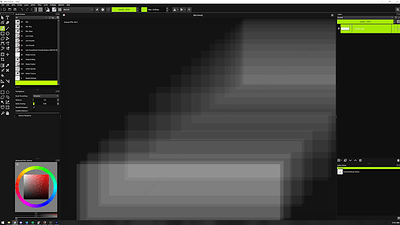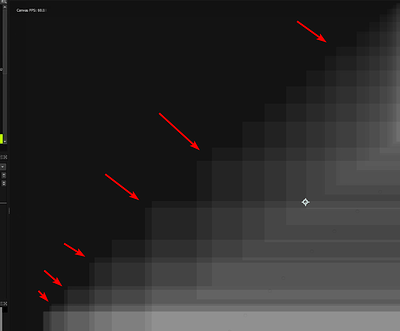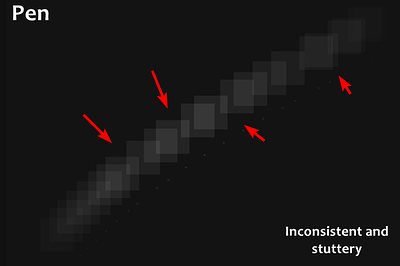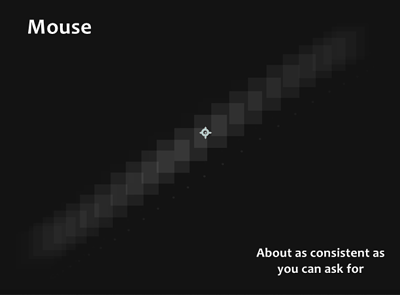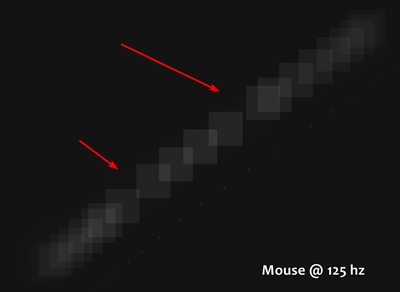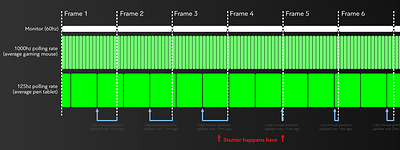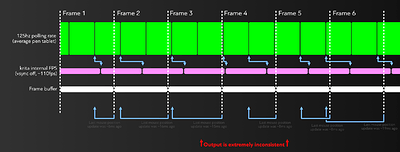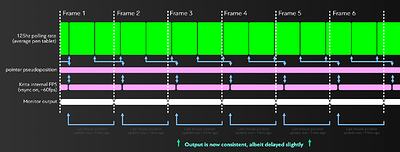Don’t get me wrong, I’m not trying to be vague, vagueness just so happens to be all I’ve gotten out of this whole adventure.
This started as a bug report almost 2 years ago. The canvas operations like zoom, pan, rotate, etc, have all made leaps and bounds since then. I’m tremendously glad I managed to help get that fixed when I did as I’ve probably used Krita a good thousand+ hours since then. Anyway, to the point.
I don’t know how to explain it. Panning, rotating, and zooming in Krita feels wrong. (Mainly panning/zooming). It’s nowhere near bad enough that I’d consider it a bug (like it was), but it’s something I’ve gotten obsessive over recently because of a friend’s negative reaction toward it as I tried to get him to move to Krita, and the worst part is I can’t figure out why it happens.
When I test the canvas movement tools in other programs, most of them feel ‘good’, the best way I can describe it is that it feels like the rendering of each frame is planned. With Krita, it almost feels like it just sort of spits them out as it gets them with a complete disregard for the timing of the previous frames, the next one, or the refresh rate of the monitor.
This can be good, by using this method, Krita can output hella framerates, usually hitting 300+ for me. So why does it feel so choppy? When my friend tries these operations on his 160hz monitor, he says they are godly smooth, but he says he notices the ‘inconsistency’ on his 60hz. I personally don’t get the 160hz experience, as my Cintiq (and no drawing tablet as far as I know) gets over 60hz currently.
I originally started investigating into why this is recently, and began writing another ‘bug’ report which was mainly a suggestion. But as I dove into it, the more confused I became. I recorded 1000fps footage of my screen while panning, I recorded 60FPS screencaps of all the programs, logged frame timings, messed with various GPU’s on various computers using various VSync settings, plotted positions of the canvas during pans, wrote scripts to programmatically pan the canvas in perfect circles, I went the full 9 yards. Yet I couldn’t come up with any major hard numbers to support my bug report, and I knew that would mean skepticism, so I’m turning here instead.
I could see it with my eyes, I’ve stared at that canvas long enough in my career to tell it’s different. The first thing my friend said as I managed to get him to switch to Krita was that it felt laggy, despite his fps readout being 130+fps. To make sure I wasn’t crazy I set up some blind studies, where I showed various artist friends recordings of me panning around a blank canvas with anything cropped that would indicate which program was which. They all successfully pointed out that one was smoother than the other.
So I turned the bug report into this thread, calling other artists to see if anyone else notices this. I know it may not bother you, since I know I’m a stickler for this sort of stuff, but I’d still like to know if you notice it when directly compared to other programs. You can turn on your FPS counter in performance settings->Debug logging of OpenGL framerate. Does it feel like you’re getting 60fps even though your reported framerates are probably much higher?
I’m also going to be using this thread to post any recordings or logs or anything I manage to find while looking deeper into this. Thanks to the devs for all their hard work, and thanks everyone else for the support of the program. I truly think we can all make it better than it already is.
